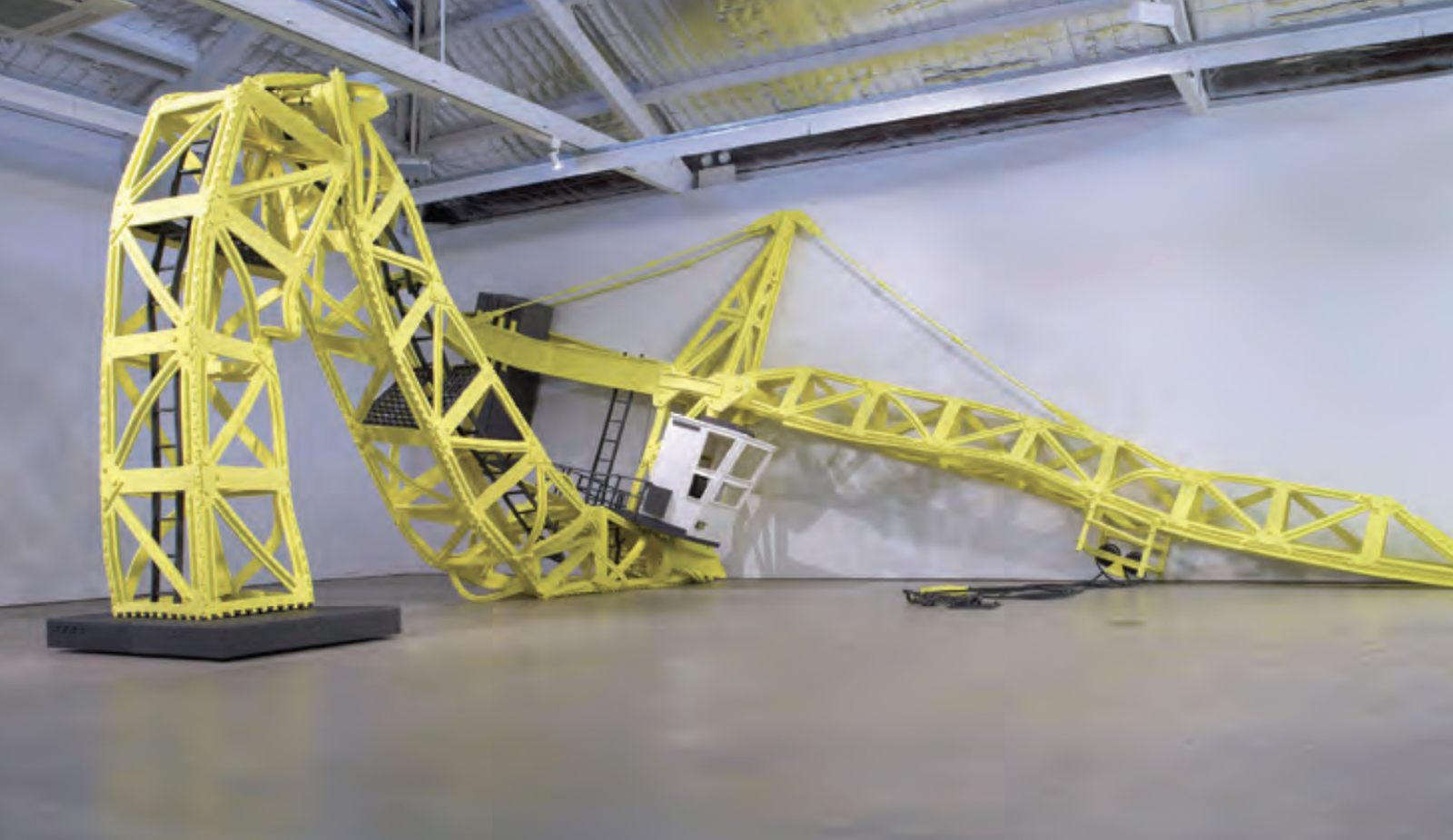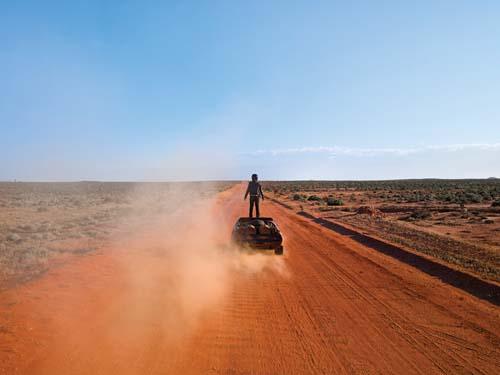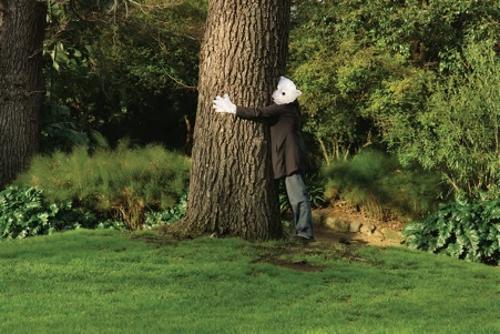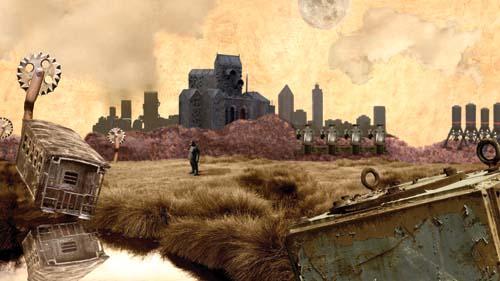
The Golden Age: here today, gone tomorrow. Eye-to-eye with an excavator, its hulk commanding a slippery slope of broken plastic - buckets, recycling bins, toys, hard hats, packing foam – a mountain of yellow. The machine could be a kid's dream – big, bright, promisingly powerful. Yet this king of the castle is constructed of the same plastic as the shattered detritus crushed and mounded beneath its tank-like treads. A super-sized raptor, both scattered and contained, a moralising analogue to the notion 'we are what we eat’, and embodied dialectic between industrially produced objects and their waste by-products. In 1972 in an essay in 'Artforum' Lawrence Alloway wrote: ‘Since the 19th century, man has shared in landscape formation at a scale comparable to that of geological process ... it is no longer possible to separate man from nature … [as] the human network[s] of waste penetrate one another to form a unitary landscape.’ And yet Paul Caporn’s 'The Golden Age', a capricious material ode to a recessional landscape sliding further into worldwide environmental and financial collapse, is a reclamation from an industrially ravaged Earth.
The excavator is big, but Caporn’s crane 'Slump' is enormous. It lies, literally, collapsed in a twisted yellow heap. What felled it - the sudden jolt of shifting tectonic plates, the strike of a tornado, a tsunami? What turned a finely balanced and engineered steel structure into this soft foam choreography of lame limbs? With an empty hook, and not a load in sight, this otherwise infallible giant, a symbol of financial securities, has imploded, its collapse possibly spraying the adjacent wall and floor with kilos of fine yellow plastic particles. In 1966 in 'Artforum' Robert Smithson wrote: ‘The suburbs, urban sprawl, and the infinite number of housing developments of the post-war boom have contributed to the new architecture of entropy’.
A golden age is regarded as a period of stability and prosperity brought about by an abundance of opportunities and wealth derived from or supported by a natural-resources boom. Our society spends a lot of money supporting the ideology that a higher standard of living is based on growth and consumption. Contemporary connections to land, particularly in a resource-rich state such as Western Australia, stem largely from the economics of demand and supply. Caporn’s star picket 'Peel' that is thick with multiple coats from stirring paint and his paint lumps 'Polypores', cut into concentrically ringed agate-like cross-sections, attest to a continuous desire to keep up appearances.
But a golden age usually concludes with a catastrophic event, often aligned with greed. The plastic crane and its cousin the excavator are impostors of economic growth. Caporn’s hardhats are brutally impaled by 10 inch nails, and an adjacent mass of spongy earplugs, like exposed brain matter on red alert, are painfully squeezed in a table vice. 'Can Man Survive?' was an exhibition held in 1969 at the American Museum of Natural History in which viewers were caught between the twin domains of belief and delusion. Clearly the machine in the garden is wreaking havoc and Caporn aggressively questions the nature of relationships between mind, hand, and land. In a 1973 article in 'Artforum', on Frederick Law Olmsted the founder of American landscape architecture, Smithson wrote: ‘The authentic artist cannot turn his back on the contradictions that inhabit our landscape.’












